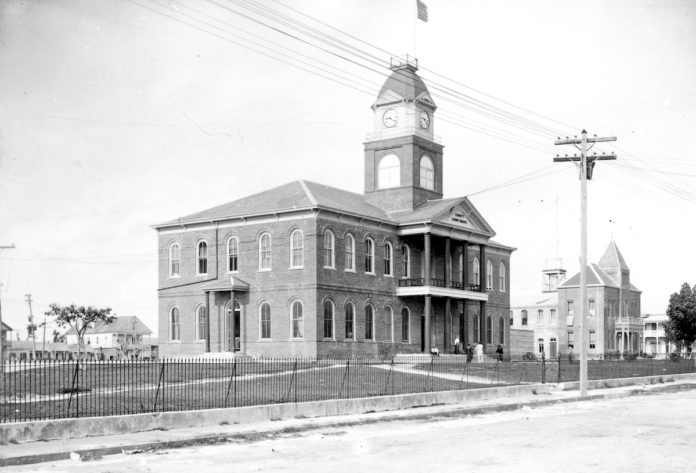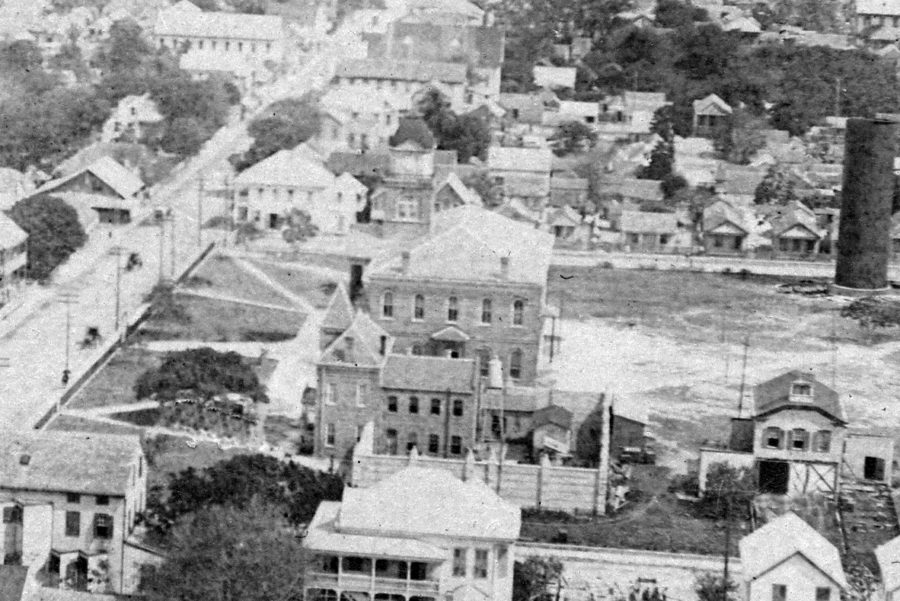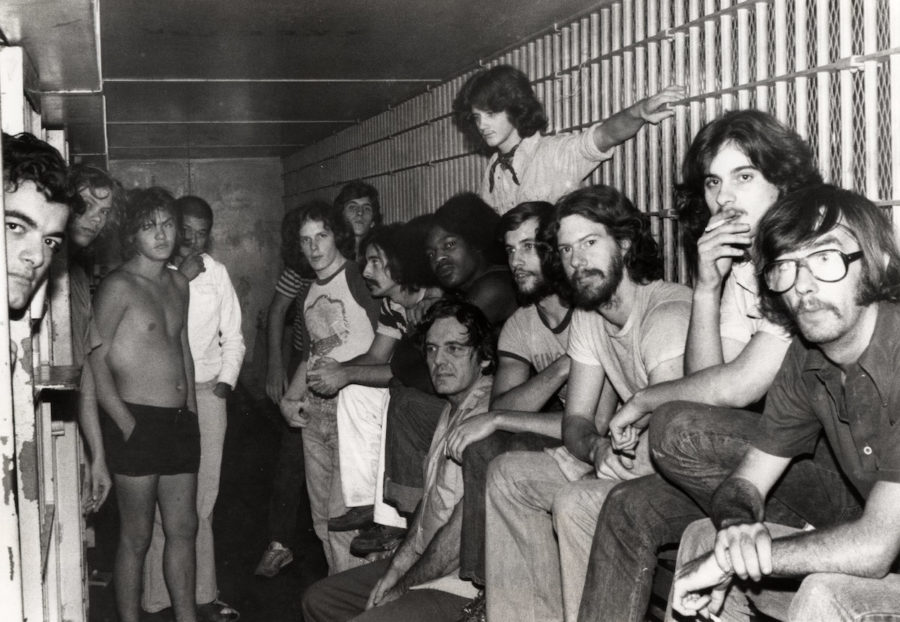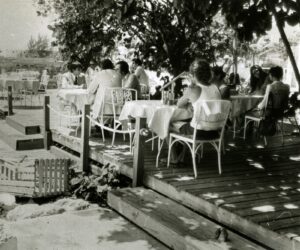
The fifth version of the Key West jail in Jackson Square on Whitehead Street was built in 1892 after a fire had reduced much of the island’s commercial center to ashes a few years prior. With 18,000 residents at the time, the city of Key West was the most populous in Florida, and a stately and solid jail and courthouse was designed to symbolize that pride — not to mention provide a more fireproof facility.
An African-American child of slaves, Charles Fletcher Dupont was elected sheriff in 1888 and was helping to oversee the jail. In 1891, he prevented the attempted lynching of two pro-Spain Cubans accused of murdering a pro-independence Cuban.
Such stories are just the tip of the iceberg for the old Key West jail on Whitehead Street, and, fittingly, it is now in phase three of a renovation that will turn it into a museum, hopefully to open for the 2022-23 tourist season.
The project and construction were approved by the Monroe County commission at its April 21 meeting and is being guided by the Key West Art and Historical Society. The plan is to build a museum that recreates a circa-1900 jail experience and tells Monroe County history.

Keys Weekly took a guided tour through the 1892 and 1910 portions of the jail, led by Cary Knight, director of project management for the county; Rob Tudor, county project manager; and Michael Gieda, executive director of the Key West Art and Historical Society. Walking through the hot and musty old jail, one can almost hear the inmates murmur and yell as you walk by the cells and peer through the rusty barred windows that overlook the former yard. You almost expect to see old Brooks from “Shawshank Redemption” walking by with a cart of library books.
Per a report that was commissioned by the county in 2018 and created by Bender & Associates Architects, the jail typically held about 12 inmates in 1900, usually drunks and roustabouts: “Nearly all had been born in Florida, although five had Bahamian parents.”
But, as Knight pointed out, the museum’s mission is about more than recreating an eerie jail experience. “It’s not just about people getting arrested and ghost tours and fun,” he said. “It’s also a celebration of law enforcement in the community.”
“The museum will be a celebration of a unique time in Key West, when it was hustle and bustle,” added Gieda. “We’ll tell a human story, not just about the inmates. Our angle will be comprehensive. Preserving the past for our children is a huge deal.”
Over the decades, the number of inmates coming through the Key West Jail overwhelmed the system, even with more buildings and space added. Eventually, the Monroe County Detention Center on Stock Island was built in 1993 to accommodate the overflow.
Knight said it took six to seven years to get the money to renovate the old Key West Jail. Momentum picked up about two years ago when Florida’s Division of Historic Resources gave the project a $500,000 grant. Soon after, the Monroe County Tourist Development Council donated $1.2 million.

The first phase of the renovation took care of the roof and gutters, then the second phase included demolition work. Phase three, the current phase, is starting now. On April 21, the BOCC awarded a bid in the amount of $234,000 to Marino Construction Group to replace doors and windows.
Tom Hambright, historian for the Monroe County Public Library System, pointed out that the human story of the jail can sometimes be hard to look at. He said that when he walks by the old Whitehead Street jail, he always thinks about Manuel Cabeza. In December 1921, Cabeza was attacked by members of the Ku Klux Klan for having a mulatto girlfriend. He later identified one of his KKK attackers and shot him, so Cabeza was thrown in jail. Subsequently, Cabeza was dragged out of his cell by KKK members and lynched, Hambright said, because the sheriff, who was involved with the KKK at the time, looked the other way.
“History is not always fun and games,” said Hambright. “You have to tell the whole story. With all the news about our legal system, how bad it is now, you go back to 1920, and it was really horrible in those days. It’s important to remember or else you’ll repeat it. Sometimes I think we’re not paying attention.”





















